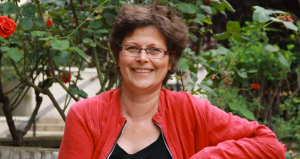Véronique Hertrich
DEMOSUD, is a Research Unit who studies demographic dynamics of Southern populations, the forces driving them and the issues they raise. INED senior researcher Véronique Hertrich is responsible for the unit.

(Interview conducted in Februar 2016)
Why pay particular attention to Southern populations?
We cannot understand the demographic dynamics of today’s world if we do not develop research on Southern countries. 80% of the world’s population live in them, and they account for virtually all world demographic growth. Africa alone (16% of the world population) will account for nearly two-thirds of worldwide population growth in the coming half-century. Demographic trends in the South are diverse; they also present us with unprecedented scenarios. On the mortality side, the rise of “social” diseases (tobacco use, diabetes, etc.) in a part of the world where communicable diseases still impact heavily on life expectancy has led demographers and epidemiologists to speak of a “double burden” for health and to work to identify the factors slowing if not distorting the epidemiological transition. On the fertility side, what explains the fact that transition is slowing at still high levels, levels found nowhere else on earth? After emphasising hindrances to using contraception, demographers have now shifted to other approaches focused on individuals’ and couples’ family plans and the moral dilemmas and contextual constraints they are confronted with; also on how childcare and conjugal relations are organized, to give just a few examples.
What new data and knowledge will the unit contribute?
The problematics of Southern countries have always been a part of INED’s programme of research; the very expression “Third World” was forged in 1952 by the Institute’s founder Alfred Sauvy. Most INED research units include projects at least partially concerned with Southern populations. The DEMOSUD unit was created to bolster this research area, so that the various Southern regions and populations would become the subject of a large-scale research programme. It will also serve as a base for setting up and conducting international projects such as the European DEMOSTAF project, and for formalizing international partnerships. And it will certainly play its part in international scientific conferences and conventions. A colloquium on “childhood and family dynamics in Africa” is scheduled for November 2016 and an international seminar on the “demographic dividend and fertility trends in sub-Saharan Africa,” jointly organized by INED, IRD and the French Academy of Sciences, for late 2016-early 2107.
What are the unit’s approaches and priorities?
The different INED research projects on Southern populations all have certain points in common—a kind of INED signature if you will. First, all use a combination of large-scale comparative approaches and targeted studies of particular populations, emerging behaviours, sensitive subjects. Second, data is always a priority and a major area of investment: original surveys, regular tracking of demographic change in specific sites in West Africa (these studies have been under way for over 20 years), combination and comparison of national and local sources. Last, strong commitment to long-term studies as the best means of stepping back and putting economic phenomena and current issues into perspective. All these orientations are operative in the unit’s three key projects:
Mortality and health in sub-Saharan Africa
Data and indicator quality in Southern countries: assessment and improvement
